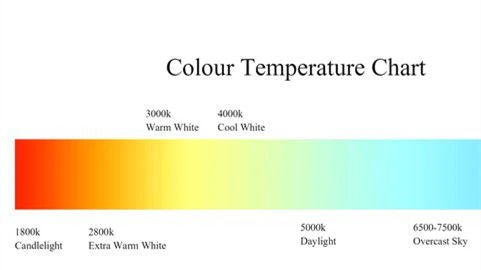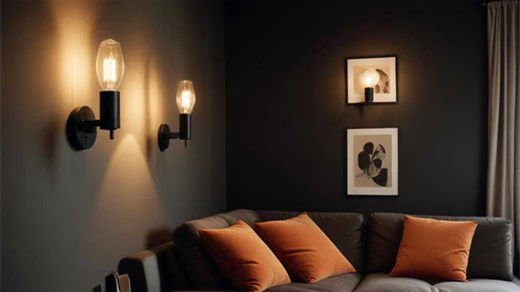LED lighting has revolutionized the way we illuminate our spaces, offering a combination of energy efficiency, longevity, and versatility. One of the remarkable features of modern LED lights is their ability to adjust both power (brightness) and color temperature. This adaptability enhances user experience by providing customizable lighting environments for various needs and moods. In this blog, we will delve into how LED lights achieve adjustable power and color temperature, exploring the underlying technology and its practical applications.
The Basics of LED Lighting
Light Emitting Diodes (LEDs) are semiconductor devices that emit light when an electric current passes through them. Unlike traditional incandescent bulbs, which generate light by heating a filament, LEDs produce light through electroluminescence, making them more energy-efficient and longer-lasting.
Adjustable Power in LED Lights
Adjusting the power of an LED light essentially means changing its brightness. This is achieved through a process known as dimming. There are two primary methods for dimming LED lights:
-
Pulse Width Modulation (PWM):
- Principle: PWM controls brightness by switching the LED on and off at a high frequency. By adjusting the ratio of the 'on' time to the 'off' time (duty cycle), the average power delivered to the LED changes, thus altering the brightness.
- Advantages: High efficiency, precise control, and minimal impact on LED lifespan.
- Applications: Widely used in household lighting, displays, and automotive lighting.
-
Constant Current Reduction (CCR):
- Principle: CCR adjusts the brightness by varying the current supplied to the LED. Lowering the current reduces the light output, and vice versa.
- Advantages: Simple implementation, stable light output without flickering.
- Disadvantages: Less efficient compared to PWM and may affect LED lifespan at lower currents.

Implementing Adjustable Power:
To implement adjustable power, modern LED lights often incorporate dimmable drivers that can interpret signals from dimming controls, such as wall-mounted dimmers or remote controls. These drivers use either PWM or CCR techniques to regulate the power supply to the LEDs, allowing users to smoothly transition between different brightness levels.
Adjustable Color Temperature in LED Lights
Color temperature refers to the perceived warmth or coolness of a light source, measured in Kelvin (K). Lower color temperatures (2700K-3000K) appear warm and yellowish, similar to incandescent bulbs, while higher color temperatures (5000K-6500K) appear cool and bluish, resembling daylight.
Adjustable color temperature in LED lights is achieved through the following methods:
-
Tunable White LEDs:
- Structure: These LEDs have multiple diodes within a single fixture, typically combining warm white and cool white LEDs.
- Control: By adjusting the intensity of each type of diode, the overall color temperature can be tuned. For example, increasing the intensity of the warm white diodes while decreasing the cool white ones results in a warmer light, and vice versa.
-
RGB LEDs:
- Structure: RGB LEDs combine red, green, and blue diodes. By mixing these colors in different proportions, a wide range of color temperatures (and colors) can be produced.
- Control: Advanced control systems allow users to fine-tune the output to achieve the desired color temperature or even dynamic lighting effects.
Implementing Adjustable Color Temperature:
To enable adjustable color temperature, LED lights use sophisticated control systems that can vary the power supplied to different diodes within the fixture. These systems often come with user-friendly interfaces, such as mobile apps or smart home integrations, allowing users to select their preferred color temperature settings effortlessly.
Practical Applications of Adjustable Power and Color Temperature
The ability to adjust both power and color temperature in LED lights has opened up numerous possibilities across different settings:
-
Residential Lighting:
- Ambiance Creation: Homeowners can create different atmospheres for various activities, such as warm, dim lighting for relaxing evenings or bright, cool lighting for cooking and cleaning.
- Energy Savings: Adjustable power allows for reduced energy consumption by dimming lights when full brightness is not needed.
-
Commercial and Office Lighting:
- Enhanced Productivity: Adjusting color temperature to cooler tones during working hours can improve concentration and productivity, while warmer tones in break areas promote relaxation.
- Customizable Workspaces: Employees can personalize their workspace lighting to suit their preferences, enhancing comfort and job satisfaction.
-
Healthcare Facilities:
- Circadian Rhythm Support: Adjustable lighting can simulate natural light patterns, helping to regulate patients’ circadian rhythms and improve sleep quality.
- Task-Specific Lighting: Different lighting conditions can be set for various medical procedures, enhancing visibility and precision.
-
Retail and Hospitality:
- Mood Setting: Retailers can use adjustable lighting to highlight products and create a welcoming shopping environment. In hospitality, different lighting settings can enhance the guest experience in restaurants, hotels, and event spaces.
- Versatility: Spaces can be easily reconfigured for different events or seasons, offering flexibility without the need for physical changes to the lighting infrastructure.

The Future of Adjustable LED Lighting
As technology continues to advance, the future of adjustable LED lighting looks promising with several emerging trends:
-
Integration with Smart Home Systems:
- Automation: Smart LEDs can be integrated with home automation systems, allowing for automated adjustments based on time of day, occupancy, or user preferences.
- Voice Control: Compatibility with voice assistants like Amazon Alexa and Google Assistant provides hands-free control over lighting settings.
-
Human-Centric Lighting:
- Health and Wellbeing: Research into the effects of light on human health is driving the development of lighting solutions that support well-being by mimicking natural light cycles and optimizing light for different activities.
- Adaptive Lighting: Systems that dynamically adjust color temperature and brightness based on environmental factors and user behavior are becoming more prevalent.
-
Energy Efficiency Improvements:
- Advanced Materials: Innovations in LED materials and manufacturing processes are leading to even more energy-efficient and longer-lasting products.
- Smart Grids: Integration with smart grids allows for more efficient energy management and the potential for responsive lighting systems that adjust based on grid demands and availability of renewable energy sources.
Conclusion
Adjustable power and color temperature in LED lights provide unparalleled flexibility and customization, making them ideal for a wide range of applications. Through technologies like PWM and CCR for dimming and tunable white and RGB LEDs for color temperature control, LED lighting systems offer users the ability to create optimal lighting environments tailored to their specific needs. As the industry continues to evolve, we can expect even more innovative solutions that enhance our interaction with light, improving both functionality and well-being in our daily lives.


































Leave a comment
This site is protected by hCaptcha and the hCaptcha Privacy Policy and Terms of Service apply.